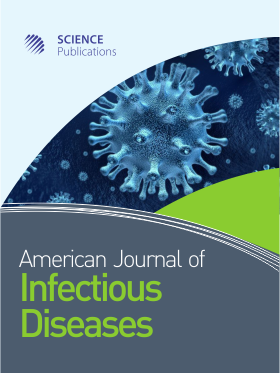EMERGING METRONIDAZOLE RESISTANCE IN ANAEROBES AND MAPPING THEIR SUSCEPTIBILITY BEHAVIOUR
- 1 Venus Medicine Research Centre, India
Abstract
In the present study, anaerobic clinical isolates of Bacteroides fragilis, Escherichia coli, Staphylococcus aureus and Yersinia enterocolitica were obtained from different clinical specimens and were subjected to molecular typing to detect the gene encoding metronidazole resistance in these isolates. Subsequently, antibacterial activity of drugs was tested against the selected clinical isolates. A total of 53 clinical isolates involving 18 obligate and 35 facultative anaerobic bacteria were recovered from clinical samples of 67 patients who were suspected to have anaerobic infection. A disk diffusion method was employed to screen for metronidazole-resistance among these isolates. PCR assay was used to detect the metronidazole resistant gene (nim). Susceptibility studies in metronidazole resistant clinical isolates as well as positive controls were performed according to Clinical and Laboratory Standards Institute (CLSI) guidelines. According to disc diffusion method, of 53 isolates, 21 isolates (39.6%) were found to be metronidazole resistant. Further screening of these isolates with PCR revealed only 13 isolates (24.5%) carry nim gene. Out of which 7 were of B. fragilis, 3 were of Y. enterocolitica, 2 were of E. coli and 1 was of S. aureus. The highest number of metronidazole resistant isolates were found in abscess (7) followed by intra-abdominal infection (5) and bone and joint infection (1). When metronidazole resistant isolates were subjected to screen for the presence of nim gene, all isolates were found to carry nim gene. According to minimum inhibitory concentration (MIC) data, among the tested antibacterial agents, Mebatic emerged as the most active antibacterial against metronidazole resistant isolates of B. fragilis, E. coli, S. aureus and Y. enterocolitica with MIC values 0.125 to 1.0 µg mL-1. Similarly, Antimicrobial Susceptibility Test (AST) data also revealed that Mebatic was most efficacious in the metronidazole resistant organisms. From the above results, it is evident that Mebatic has enhanced in vitro antibacterial activity compared to other drugs in metronidazole resistant isolates thus can be a potent antibacterial agent for the treatment of infections caused by metronidazole resistant organisms.
DOI: https://doi.org/10.3844/ajidsp.2014.56.63

- 3,980 Views
- 2,918 Downloads
- 24 Citations
Download
Keywords
- Anaerobes
- Resistance
- Clinical Isolates
- Metronidazole
- Mebatic
- Nim Gene
